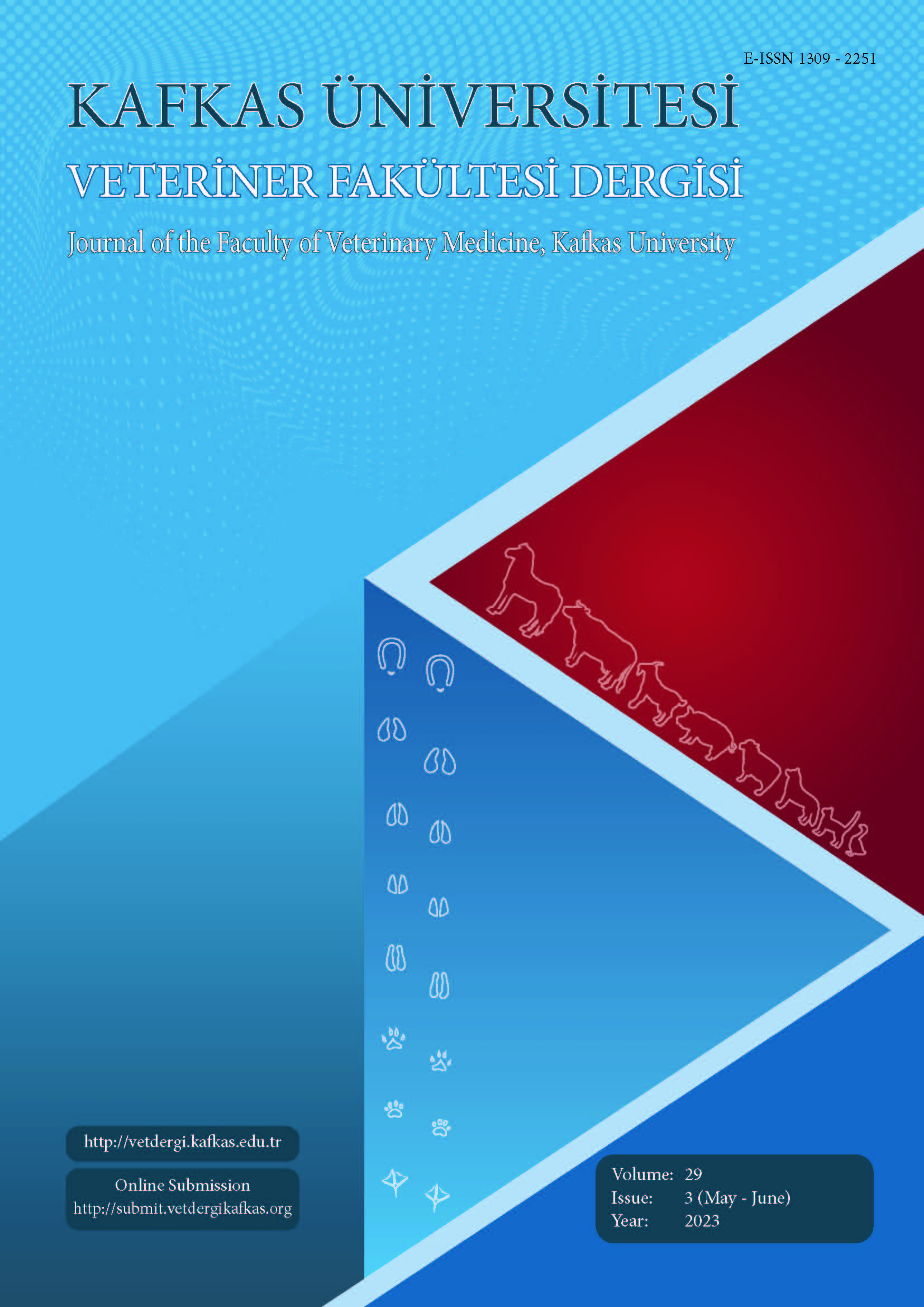
This journal is licensed under a Creative Commons Attribution-NonCommercial 4.0 International License
Kafkas Üniversitesi Veteriner Fakültesi Dergisi
2023 , Vol 29 , Issue 3
Evaluation of Antimicrobial and Antibiofilm Efficacy of Bee Venom and Exosome Against Escherichia coli K99 Strain
1Ataturk University, Faculty of Veterinary Medicine, Department of Microbiology, TR-25240 Erzurum - TÜRKİYE2Ataturk University, Faculty of Medicine, Department of Medical Microbiology, TR-25240 Erzurum - TÜRKİYE
3University of Seyh Edebali, Faculty of Medicine, Department of Pharmacology, TR-11000 Bilecik - TÜRKİYE DOI : 10.9775/kvfd.2023.29132 Escherichia coli K99 (F5) strain is one of the bacterial agents that cause calf deaths. F5 is an adhesin that allows pathogenic E. coli attach to the small intestine cells and colonize there. The presence of F5 in E. coli strains in isolated bacteria is classified as Enterotoxigenic. Bee venom and bee venom-derived exosomes are bioactive compounds that exhibit antimicrobial and antibiofilm activity. The aim of this study is to demonstrate the antimicrobial and antibiofilm activity of bee venom and bee venom-derived exosomes against E. coli, which cause calf diarrhea. Bee venom-derived exosomes and bee venom effects against E. coli strains were determined by using Minimal inhibition concentration (MIC), antibiofilm activity, fractional inhibition concentrations (FIC), and measurement of L929 cells viability ratio. Cell damage was examined under a fluorescent microscope by an immunohistochemical method. In our study, the MIC value of the bee venom-derived exosome was determined as 1.95 μg/mL. A synergistic effect was detected with a value of 0.44 in combinations of amoxicillin with clavulanic acid. Antibiofilm activity was determined at the rate of 48.8% in bee venom, while bee venom-derived exosomes inhibited the biofilm layer by 60.4%. In L929 cell lines, combination groups have been reported to reduce viability. Bee venom-derived exosomes are more effective on bacteria than pure bee venom. In conclusion; It is important that the bee venom-derived exosome, which is a biocompatible molecule and acts as a cargo element, exhibits antimicrobial and especially antibiofilm activity and is an alternative approach against increasing antibiotic resistance. Keywords : Antibacterial activity, Antibiofilm activity, Escherichia coli, Exosome, Fractional inhibition concentration, Synergistic effect










